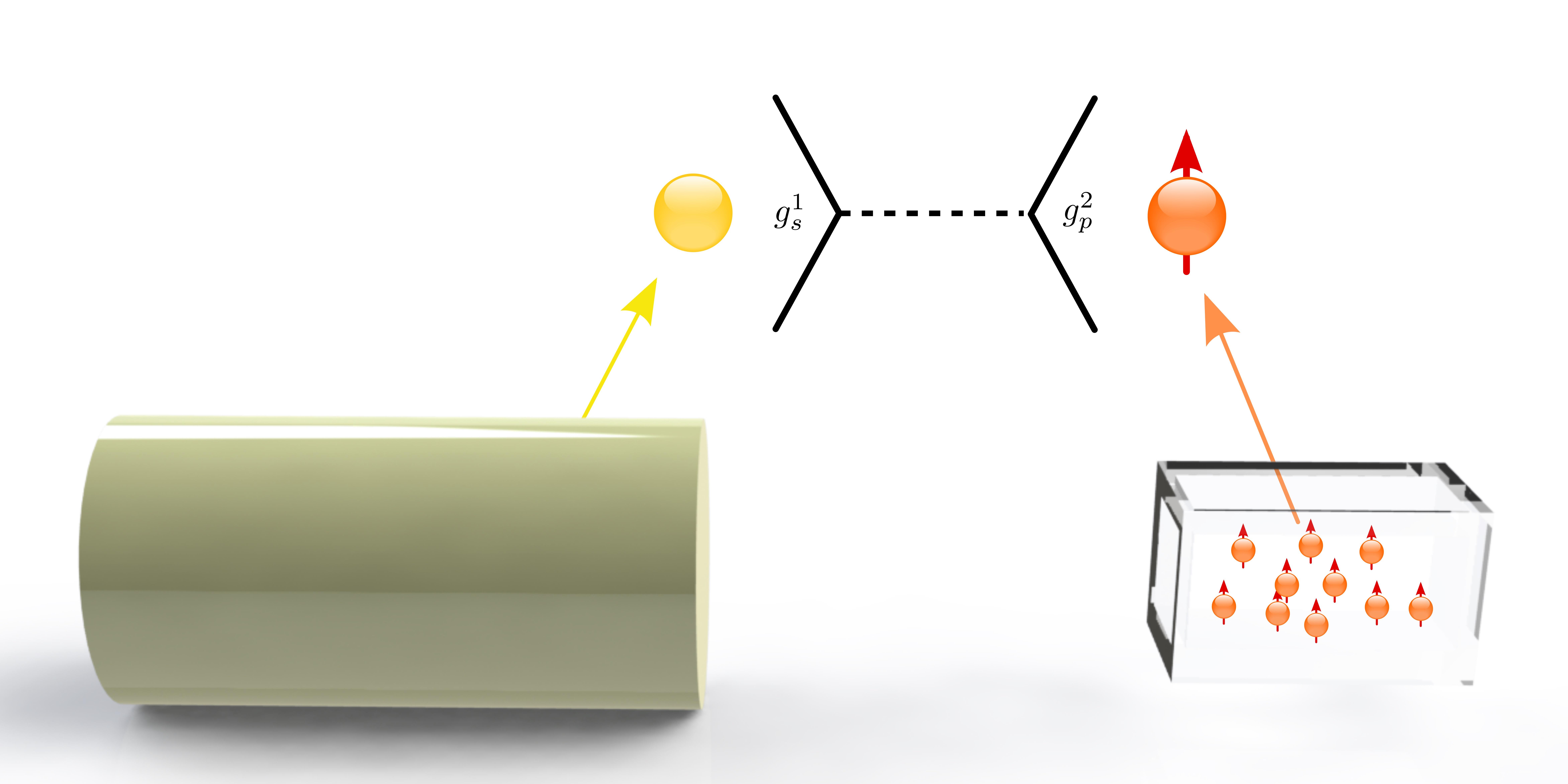
Recently, Sheng Dong, a professor at the School of Engineering Science, University of Science and Technology of China, and Lu Zhengtian, a professor at the School of Physics, jointly made progress in the physics of precise measurement based on atomic devices, and developed a high-precision xenon isotope co-magnetometer. 

When the rotational signal is zeroed in the experiment, the atomic co-magnetometer can be used to explore monopole-dipole interactions. This bizarre interaction, proposed by Nobel laureate Franck Wilczek, can be propagated by a hitherto undetected "axion" particle. The particle is a subatomic particle predicted to exist by particle physics, astroparticle physics and condensed matter physics.
In order to achieve high-precision measurement, the aforementioned research group has developed an independent atomic device preparation technology, and proposed a new theoretical analysis method for the precession spectrum of 131Xe (Xe is the chemical element xenon). At the same time, a polarization modulation method was also developed to effectively suppress the influence of polarized alkali metal atoms on nuclear spin precession.
Based on the aforementioned technology, the research group used two months of measurement data this time, in the range of 0.11 to 0.55 mm (the corresponding propagator mass range is 0.36-1.80 MeV/c2, 1 MeV/c2 is 1.783×10^( -30) kilograms) sets a new upper limit on the measurement of the strength of the nucleon-neutron monopole-dipole interaction. Especially in the vicinity of the action range of 0.24 mm, the experimental accuracy of this work is 30 times higher than the previous results.

Schematic diagram of the monopole-dipole interaction between nucleons (left) and polarized xenon atoms (right), picture from University of Science and Technology of China
The aforementioned team used the xenon isotope co-magnetometer to further explore new physics beyond the Standard Model, setting a new upper limit on the strength of the monopole-dipole interaction between nucleons and neutrons on the submillimeter scale. The results were published in Physical Review Letters.
Image via Physical Review Letters
Atomic co-magnetometer is an atomic device that can be used to study basic physics and has practical application value. It eliminates the influence of magnetic field fluctuation and drift by simultaneously measuring the spin precession signals of two kinds of atoms in the same place, so as to accurately measure the rotation of the device itself, so the common magnetometer is also a small gyroscope.When the rotational signal is zeroed in the experiment, the atomic co-magnetometer can be used to explore monopole-dipole interactions. This bizarre interaction, proposed by Nobel laureate Franck Wilczek, can be propagated by a hitherto undetected "axion" particle. The particle is a subatomic particle predicted to exist by particle physics, astroparticle physics and condensed matter physics.
In order to achieve high-precision measurement, the aforementioned research group has developed an independent atomic device preparation technology, and proposed a new theoretical analysis method for the precession spectrum of 131Xe (Xe is the chemical element xenon). At the same time, a polarization modulation method was also developed to effectively suppress the influence of polarized alkali metal atoms on nuclear spin precession.
Based on the aforementioned technology, the research group used two months of measurement data this time, in the range of 0.11 to 0.55 mm (the corresponding propagator mass range is 0.36-1.80 MeV/c2, 1 MeV/c2 is 1.783×10^( -30) kilograms) sets a new upper limit on the measurement of the strength of the nucleon-neutron monopole-dipole interaction. Especially in the vicinity of the action range of 0.24 mm, the experimental accuracy of this work is 30 times higher than the previous results.
Related Posts
0 Comments
Write A Comments